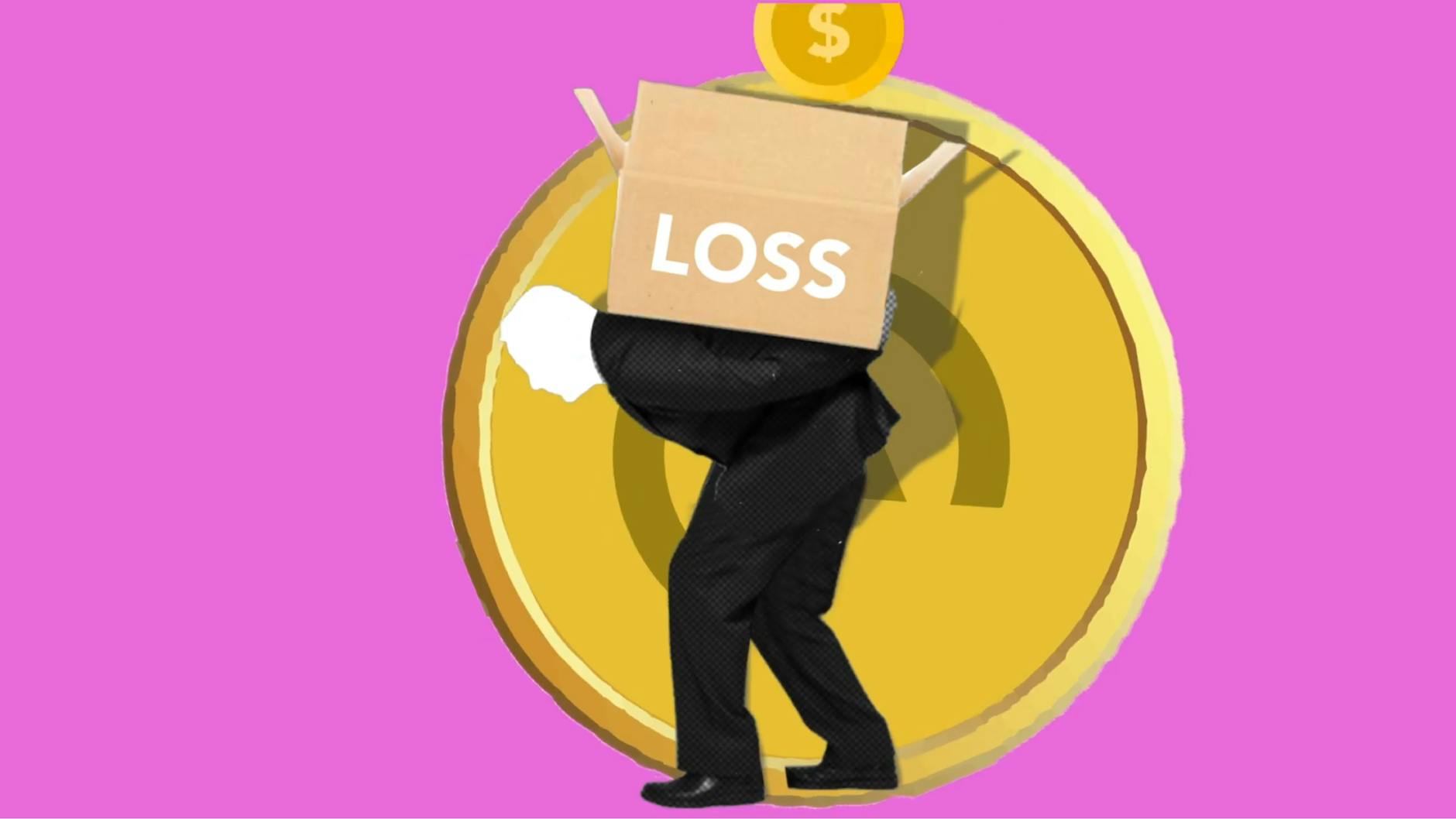Let’s be honest, no one shares their worst moments at dinner parties or on glossy LinkedIn profiles. But let’s face it, failure is where the good stories hide. That’s where you slip, skid, and pick up the bruises and wisdom investors actually want on your resume.
When entrepreneurs list every missed shot, flopped launch, and wild misfire, the magic happens. Sharing these lessons signals real-world grit. Investors aren’t looking for flawless founders, they want people who’ve tasted trouble and came out laughing, learning, and ready to try again.
A public “failure resume” isn’t a walk of shame, it’s your best asset. Your war stories can spark trust, attract backers, and remind others not to sweep their slips under the rug. If you’ve got scars, flaunt them. That’s where your credibility (and greatest lessons) live.
Why Every Founder Needs a ‘Failure Resume’
Out in the startup wild, the “failure resume” flips the tidy tale of LinkedIn upside down. Instead of a gold-star scroll listing flawless wins, think of this as your career’s blooper reel. Where the classic resume is all highlight reel and victory laps, the failure resume documents your missed dunks, faceplants, and the lessons that made you tough enough to try again.
By sharing your stumbles, you invite trust. Investors don’t want fairytale founders, they want scrappy survivors. Showcasing flops on your resume makes you look less like a robot and more like a human who gets back up. According to this New York Times article, even top CEOs keep a list of crash-and-burn moments and use it to spark honest, memorable conversations.
Instead of hiding mistakes behind a velvet rope, you display them proudly—each one a badge proving you can take a punch and get back in the ring.
 Photo by AlphaTradeZone
Photo by AlphaTradeZone
What Goes on a Failure Resume?
A failure resume needs the truth—the mess, the missteps, and all the awkward in-betweens. Here’s what you should list, even if it makes you sweat:
-
Big project flops: Did you bet the farm on an app no one downloaded? Write it down.
-
Missed funding rounds: When investors ghosted you or the pitch bombed, include it.
-
Bad hires: If you hired the “rock star” who later wrecked the band, put it on the list.
-
Stubborn mistakes: Those “I knew better, but did it anyway” moments count double.
-
Epic miscalculations: From pricing disasters to launching too soon (or too late), add them all.
-
Surprising small setbacks: Even the tiny failures, like a campaign that flopped or a partnership that fizzled, are gold.
Every loss comes with a lesson. Each bullet on your failure resume plants a flag that says, “I’ve been there, I did that, and here’s what it taught me.” You can find more guidance on what a failure resume should look like with this breakdown.
How to Start Yours (and Not Freak Out)
Building a failure resume can feel like standing in your underwear on the top floor of an office building. The trick is to make it fun and get out of your own way.
-
Grab a notepad or open a doc.
-
Go zero filter: Jot down every flop, floplet, and fiasco—no matter how embarrassing.
-
Add what makes you cringe (or laugh): The bigger the “oh no,” the better the story for later.
-
Don’t play it cool: If it hurt, or made you question all your life choices, it goes on the list.
-
Push past the fear: Remember, your screw-ups aren’t black marks, they’re stripes you earned.
Here’s a tip: think back on moments that still hit you with a hot flash of embarrassment. Those are gold for your failure resume. Still nervous? Keep your first draft private. Once you can laugh about these moments, you can share them—and watch your real founder cred level up.
Failure resumes yank off the rose-colored glasses and swap them for clear vision. The real power move is turning your fumbles into story fuel.
Turning Flops into Street Cred
If you’ve ever owned a truly epic flop—something that crashed so loudly you half-expected to see smoke—you’re in good company. Loud mistakes actually build your reputation, not wreck it. When founders stop hiding their faceplants and start documenting them for all to see, their street cred takes off. Public proof that you’ve hit the mat (and stood up again) makes people notice. Investors, partners, and even customers respect someone who doesn’t pretend to be invincible. Here’s how turning your worst flops into a badge of honor gives you a serious edge.
Investors Love a Good Comeback Story
 Photo by Ketut Subiyanto
Photo by Ketut Subiyanto
Venture capitalists and angel investors don’t just look for the best pitch deck or the “perfect” founder. They actually keep an eye out for grit. Surviving and learning from a wipeout becomes one of the strongest trust signals in business. A founder who’s crashed and burned—and owned it—shows they know what tough looks like.
-
Realists vs. daydreamers: Investors want to see scars, not just shine. A founder with no mistakes often looks untested or a bit too good to be true.
-
Lessons trump luck: A Harvard study found that entrepreneurs who failed (but could explain why) were more likely to get funded again than total newcomers or lucky first-time winners. Surviving hard times is a better teacher than having early luck.
-
Public confessions pay off: Many VCs openly admit they place bigger bets on founders who survived and learned, instead of those with only a highlight reel. Check out this candid discussion on founder vulnerability and failure for investor insights on why authenticity reigns.
Take Evan Williams, co-founder of both Blogger and Twitter. Before he struck gold, he famously fumbled with a podcasting platform called Odeo. Apple’s launch of iTunes Podcasts pretty much wiped Odeo off the map. He didn’t sweep it under the rug—instead, he was honest about what went wrong. When he pitched Twitter next, investors wanted in, mostly because he’d already weathered a storm and proved he could adjust.
Failure as a Superpower: What Really Impresses Others?
There’s a trap many founders fall for: trying to look flawless. But real power comes from sharing the whole story, the rough parts included. Instead of posting only the wins, why not give your failures some airtime?
When you admit the hard stuff, here’s what happens:
-
People trust you more. Honest founders invite stronger relationships—with investors, customers, and even their own team.
-
You give permission for others to be real. Nobody can relate to perfection. Your story of bombing big and bouncing back helps others drop the mask.
-
It’s memorable. We remember founders who told the truth, not the ones who just recited numbers.
For a dose of this in action, look at Sarah Woolf, founder of an early e-commerce startup. Her first company fizzled, but her honest blog post about everything she did wrong quickly won her respect. Her next round of backers said her openness sealed the deal. Authentic failure stories are contagious; they break down walls and get people invested emotionally and financially.
Founders who wear their scars with pride—including Nicholas Stone of Bluestone Lane, who talked openly about the messes and fixes in his journey—often pull in even more attention the second time around. You can read more about how entrepreneurs find strength in their failures in this interview with Nicholas Stone.
Take a second and think about the last time you felt truly inspired. Bet it was someone who laid it all out, screw-ups and all—not the person who sounded like a robot reading wins. So next time you’re tempted to hide your stumbles, remember: the scars are what people admire most.
Ready for some real talk? Write down your worst flop and what you learned. You’ll find that your story isn’t just a confession—it’s your new superpower.
Your Flops Are Your Best Assets—Here’s Why
Ever wish you could skip the painful stumbles and get straight to the sweet part where you’re holding the trophy? Spoiler: skipping the tough lessons means you leave the best stuff on the table. Your biggest flops are secretly your most valuable tools. Each misstep, botched product, or spectacular fail is a sticky note reminding you what not to do next time. Investors, customers, and your future self all trust founders who have been through a few burning kitchens and still show up wearing oven mitts. If you want credibility, start with your bloopers and own every one.
Lessons You Can’t Learn Any Other Way
 Photo by Monstera Production
Photo by Monstera Production
Success feels good, but it rarely teaches you much. It’s the flops that stick to your ribs—like a lesson learned at 3 a.m. after a launch flopped and you’re eating cereal over the sink. That’s the moment you remember the fix.
Consider these punchy takeaways from real founders and teams:
-
Humility, the hard way: Failing on stage forces you to drop the ego act. That’s real humility—a trait investors and partners watch for. Messing up is how you learn you’re not the exception, you’re human.
-
Resilience isn’t just a buzzword: You only discover how tough you are after you land on your face. The founder who watches their “revolutionary” product go nowhere but dusts themselves off and iterates again? That’s where the future unicorns come from.
-
Self-awareness by fire: A win might pump your ego, but a loss makes you look in the mirror. Founders who document their setbacks build real self-knowledge, which shapes smarter decisions next time.
Big-name flops aren’t hard to find. James Dyson built over 5,000 failed vacuum prototypes before hitting gold. Oprah Winfrey was once fired for being “unfit for TV.” Each ugly misstep taught them more than a streak of early wins ever could.
It’s not just a bigwig thing. Everyday entrepreneurs who blow their marketing budget on an ad campaign that flops come out with eyes wide open for the next move. Scraping your knees on the playground, whether you’re running a startup or a lemonade stand, means you know what to fix next.
Here’s the clincher: hiring managers and investors admit they trust a founder who wears their mistakes out loud. If you’ve faced-plant and kept the receipts, you prove you’re not running on dumb luck. For more examples of how failure shapes founders, this round-up from World Economic Forum is loaded with real stories.
Want a shortcut to wisdom? There isn’t one. Every legendary founder has tripped, sometimes in public and sometimes in private. Only the brave write their own “flop files” for anyone to see. That’s where the real cred starts.
For more grounded advice on how to soak up every inch of learning from your missteps, check out this list of valuable lessons from failure. These reminders are worth taping to your laptop—after all, nobody forgets the lesson they bought with their own embarrassment.
How to Share Your Failure Resume Like a Pro
Ready to let your biggest flop step into the spotlight? Sharing your failure resume can be less like public shaming and more like waving a flag that says, “I’m real. I try new stuff. I bounce back.” Whether your debut happens on LinkedIn, at a startup meetup, or in front of your own team, the trick is to keep it honest and a bit playful. Below, let’s break down the dos and don’ts so your stories spark real connections (and maybe a few laughs), instead of dread.
Dos and Don’ts of Public Failure: Share Playful and Clear Advice
 Photo by Andrea Piacquadio
Photo by Andrea Piacquadio
So, how do you actually broadcast your “blooper reel” without turning it into an awkward apology tour? Here’s a clear cheat sheet:
Do:
-
Pick your favorite flop first. Choose a story with a punchline or a valuable lesson. Think of the one that still makes you shake your head and grin.
-
Show your quirks, not just your pain. A wild slide deck fail or a pizza-order-for-50 that fed only twelve? Share the awkward parts, not just the heartbreak.
-
Mix platforms. LinkedIn posts, conference talks, or internal company all-hands all work. Try a punchy LinkedIn update (“Here’s why my launch bombed—spoiler: it involved cats”) or a lightning talk at your next meetup.
-
Relate the lesson, not just the fail. Investors and teams care about how you grew. Wrap every story with, “Here’s what I do differently now.”
-
Own the trolls. Negative comments or wisecracking friends? Take it in stride. Thank them for the spicy feedback—and hunt for any truth you might use next time.
-
Make it a party. Engage your team with a “Most Improved Flop” contest or do a lighthearted “Epic Fail Friday” post. The point: make this honest talk part of your culture.
-
Prompt reflection. Try starting with, “What’s a moment you wish you could do over?” or “What’s one flop you’d frame as art?” The goal is relatable honesty.
Don’t:
-
Don’t scramble to one-up other people’s disasters. This isn’t a contest. Your most cringe-worthy “little” flop can be more powerful than a blown product launch.
-
Skip the blame game. Nobody wants a story where the lesson is “and it was all their fault.” Claim your part, skip the finger-pointing.
-
Don’t overshare. Details are golden, but keep it meaningful. TMI can make people squirm for the wrong reasons.
-
Avoid making it all about you. If you invite comments, listen! Someone may chime in with a lesson that tops your own.


